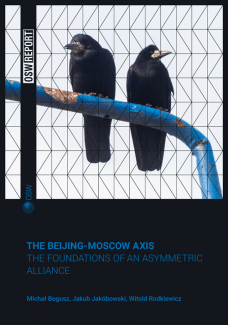The Beijing-Moscow axis

The asymmetric alliance between Russia and China is the product of a long and unevenly paced process of relation-building that was launched by both sides shortly after the collapse of the Soviet Union. It was driven by the mutually felt necessity to regulate bilateral contacts (including the resolution of border disputes, adjustment of spheres of influence in the common neighbourhood), find common answers to global strategic challenges and, above all, a shared sense of a structural conflict with the United States.
The Beijing-Moscow axis is, however, not merely an alliance between two states, but primarily an alliance between two authoritarian regimes that define their national interests in terms of maximising their chances of survival, to which end they have been striving to revise the existing world order. Both the Kremlin and Zhongnanhai see the international environment as the main source of threats to the political stability of their rule. Therefore, they share a common interest in shaping a global order that would provide the best conditions from the point of view of their continued existence. The fear of the West and of its ideological influence on their own societies serves to strengthen the alliance even further. To the Russian and Chinese elites, it is not any specific policy of the US or the European Union that poses an existential threat to them, but the very existence of a democratic alternative to their systems of government.





